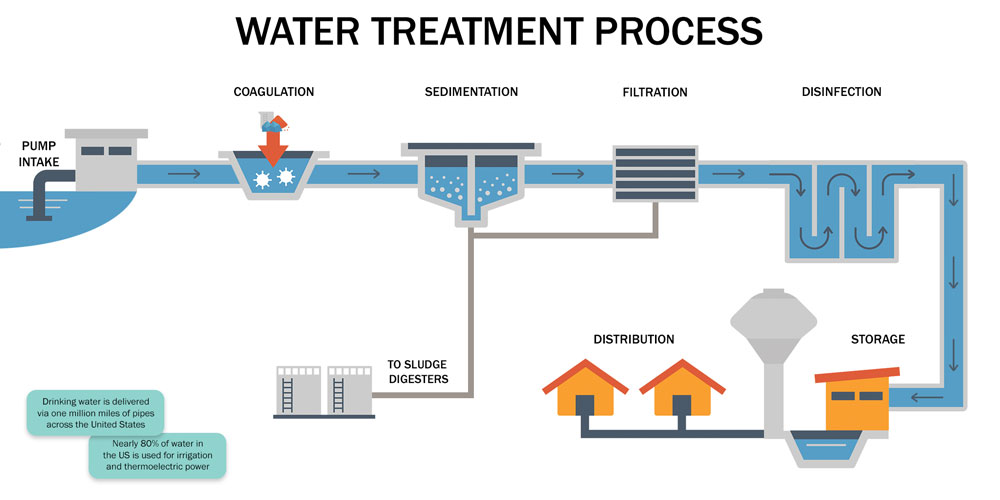Proper dosing of water treatment polymer enhances overall treatment performance.
Proper dosing of water treatment polymer enhances overall treatment performance.
Blog Article
Check Out How Water Treatment Polymer Functions in Efficient Wastewater Treatment Solutions
The combination of water therapy polymers right into wastewater therapy systems represents a substantial development in improving operational performance. These polymers function largely via systems of coagulation and flocculation, properly accumulating suspended particles for simpler elimination. Their convenience throughout varying environmental conditions adds to boosted sedimentation and decreased sludge volume. However, recognizing the certain sorts of polymers and their applications can reveal much deeper understandings right into enhancing treatment processes. What effects do these improvements hold for future wastewater management methods?
Introduction of Water Therapy Polymers
The effectiveness of wastewater management pivots on the application of numerous therapy representatives, amongst which water treatment polymers play a critical function. These artificial or natural polymers are made to enhance the effectiveness of physical and chemical processes in wastewater therapy systems. Their primary function is to facilitate the aggregation of suspended fragments, eventually improving the general top quality of treated water.
Water therapy polymers can be identified into a number of groups, consisting of flocculants, coagulants, and dispersants. Coagulants neutralize the costs of suspended particles, allowing them to come together and settle a lot more efficiently.
The application of these polymers not only improves the elimination of pollutants but additionally maximizes the operational performance of therapy plants. In addition, the selection of ideal water treatment polymers is important, as their efficiency can vary based on elements such as water chemistry, temperature level, and turbidity degrees. On the whole, water therapy polymers are important elements in modern-day wastewater management approaches, adding to cleaner water and lasting environmental methods.
Devices of Coagulation and Flocculation
Coagulation and flocculation are basic processes in wastewater therapy that personify the concepts of particle communication and gathering. These systems are crucial for removing put on hold solids, colloids, and other pollutants from water. Coagulation includes the destabilization of put on hold fragments, generally accomplished with the enhancement of coagulants such as steel salts. These coagulants counteract the electrostatic fees that keep bits apart, advertising first gathering.
Following coagulation, flocculation takes place, identified by the gentle mixing of water to motivate the development of larger aggregates, or flocs. During this phase, polymers play a substantial duty by connecting in between particles, enhancing the development of these bigger aggregates. The physical and chemical communications throughout flocculation result in a boosted dimension and thickness of the fragments, facilitating their succeeding elimination with sedimentation or filtering.
The effectiveness of coagulation and flocculation processes is influenced by various elements, including pH, temperature level, and the nature of the contaminants existing. Recognizing these systems permits for the optimization of wastewater treatment systems, resulting in enhanced use this link removal performances and total water quality. The mindful option and application of coagulants and flocculants are crucial for effective wastewater management.
Sorts Of Water Therapy Polymers
Frequently utilized in wastewater therapy, water therapy polymers are necessary for improving the performance of coagulation and flocculation procedures. These polymers can be extensively categorized into 3 primary kinds: anionic, cationic, and non-ionic.
Anionic polymers, which lug an unfavorable fee, are particularly efficient in dealing with wastewater with favorably charged pollutants. They facilitate the aggregation of suspended particles, promoting the formation of bigger flocs that work out quicker. Alternatively, cationic polymers possess a favorable fee and are typically used in applications where negatively billed bits dominate, such as in particular commercial effluents. check my reference Their capacity to reduce the effects of fees allows the effective binding of fragments, bring about boosted sedimentation rates.
Non-ionic polymers, doing not have a fee, serve as functional agents that can improve the efficiency of both anionic and cationic polymers. Their main duty involves boosting the viscosity of the wastewater, thus boosting the overall retention time of the flocs in the treatment system.
Comprehending the unique qualities of these types of water therapy polymers enables the optimization of wastewater therapy processes, inevitably leading to boosted elimination efficiencies and improved water top quality.
Applications in Wastewater Treatment

In municipal wastewater treatment plants, water therapy polymers aid lower the quantity of sludge generated throughout the therapy process. water treatment polymer. This Source decrease not only enhances operational effectiveness yet also minimizes disposal prices associated with sludge management. Furthermore, polymers contribute in treating commercial effluents, where they assist in the elimination of certain contaminants such as hefty metals and natural pollutants, making certain compliance with ecological policies

Furthermore, water treatment polymers are made use of in the enhancement of biofiltration systems, where they boost microbial task and total therapy effectiveness. Their role in membrane layer procedures, such as reverse osmosis, likewise can not be overlooked, as they contribute to membrane fouling control and lengthen the lifespan of filtration systems. Via these diverse applications, water therapy polymers are vital for achieving efficient and sustainable wastewater management.

Advantages of Making Use Of Polymers
Making use of water therapy polymers in wastewater systems offers many advantages that considerably improve treatment effectiveness and general operational efficiency. Firstly, these polymers serve as effective coagulants and flocculants, advertising the gathering of put on hold solids and facilitating their elimination. This procedure causes more clear effluent and lowers the concern on downstream therapy phases.
In addition, polymers enhance the dewatering procedure by enhancing the sedimentation characteristics of sludge. This leads to reduced volume and weight of waste material, inevitably lowering disposal prices. Furthermore, their capacity to operate throughout varying pH degrees and temperature levels guarantees versatility in various wastewater settings.
Polymers also add to the stablizing of organic processes by giving nutrients and keeping optimal problems for microbial development - water treatment polymer. This strengthened microbial activity help in the break down of organic matter, enhancing overall therapy performance
Additionally, using polymers can lead to lowered chemical use, decreasing operational costs and ecological effect. By maximizing the therapy procedure and enhancing sludge monitoring, water therapy polymers play a vital role in advertising sustainable wastewater management techniques, aligning with regulatory criteria and ecological objectives.
Verdict
In conclusion, water therapy polymers are important for enhancing the efficiency of wastewater therapy systems. Their capacity to help with coagulation and flocculation processes leads to boosted sedimentation and minimized sludge quantity, therefore optimizing therapy performance.
Report this page